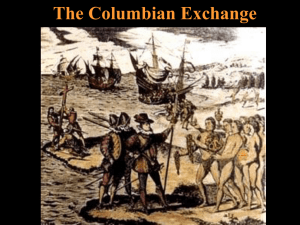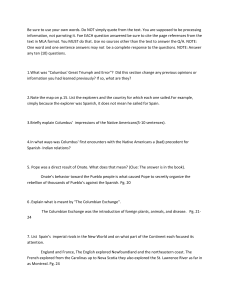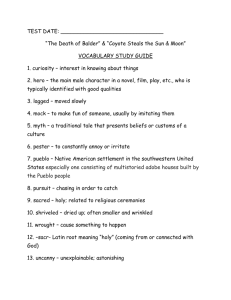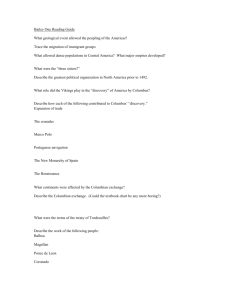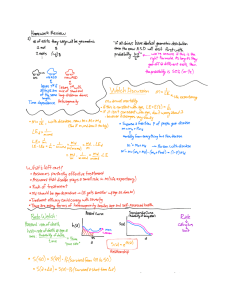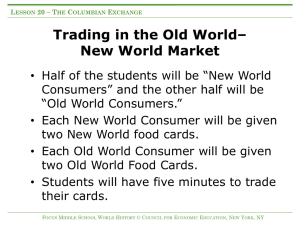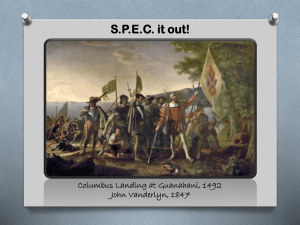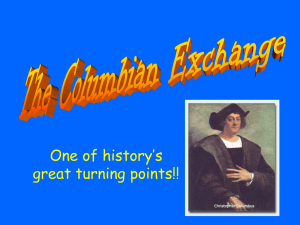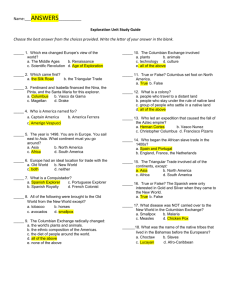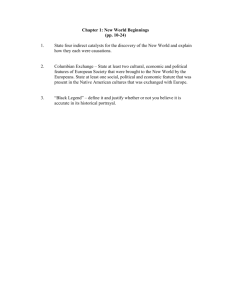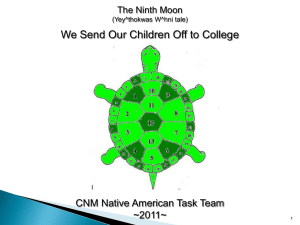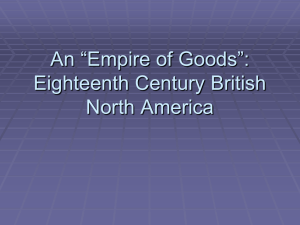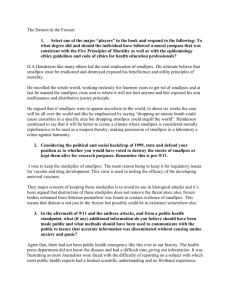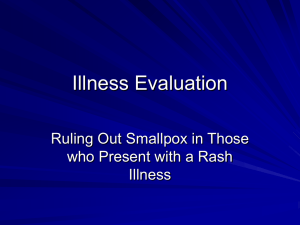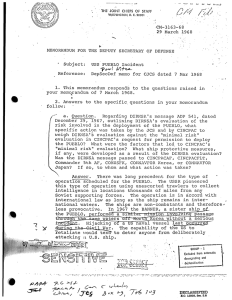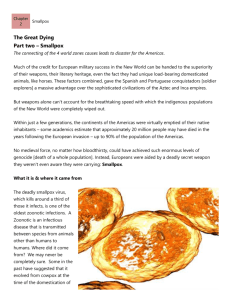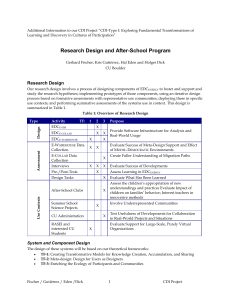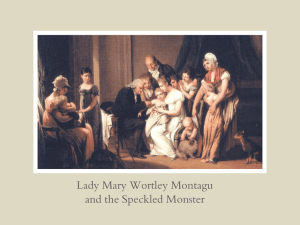Europeans and Native Americans
advertisement
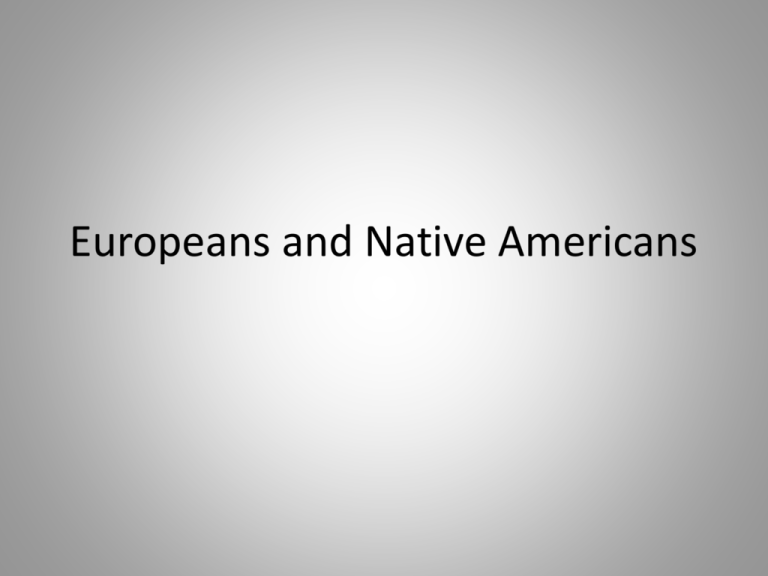
Europeans and Native Americans Pre Columbian America (1491) • Different environments led to different tribal lifestyles. – Southwest: maize cultivation; stationary; social diversification (Pueblo) – Great Plains: lack of resources; mobile (Sioux) – Northeast: agriculture; permanent villages (Iroquois) European interactions: Spanish • Disease (smallpox) • racially mixed population (mestizo) • introduction of horses dramatically changes NA lifestyle • Indian labor in the encomienda (replaced by African slaves) • Belief in white superiority to justify poor treatment (Juan de Sepulveda: conquest is Spain’s right) Columbian Exchange • From Europe to New World: New foods (coffee and sugar); livestock (horses, cows); disease (smallpox) • From New World to Europe: desirable goods (fur, tobacco, gold); new crops to stimulate population growth (corn, potatoes) • From Africa to New World (especially West Indies): slave labor Loss of cultural autonomy • Conversion efforts lead to loss of NA religions (esp. in Spanish mission system and amongst tribes in New England, such as the Wampanoag) • Efforts to please colonists to avoid decimation leads to Anglicization (esp. amongst the Cherokee) • Resistance: – Anglo-Powhatan War (1st 1614, 2nd 1644) – Pueblo revolt/Pope’s Rebellion (NM 1680) – King Philip’s War/Metacom: 1675-76 (New England)
